Knife Aspects
Tips, tricks, and general information regarding knives
It is common sense that anyone doing bushcraft always carries a knife. But there are many different types of knives, and which one is best for you and your situation may vary.
Your knife will be used for a wide variety of tasks including cutting, chopping, shaving and carving wood, preparing vegetables and other food, gutting and skinning animals and more.
Some common characteristics to consider include size, serration, folding or sheathed, weight, type of material, blade angle, etc. It is often smart to carry multiple knives of different types.
Personally, I like to always carry a good quality multi-tool on my belt, which usually has several blades of varying size and type, as well as other useful tools like pliers, saw, sharpener, screw driver, can opener and more.
Leatherman Multi-tool


But I do not rely on that one multi-tool completely for my knife functions. I will usually have at least one quality stand-alone knife and I like to carry a machete as well, which can be good for chopping large chunks of wood and clearing brush.
When choosing a knife, see that it feels comfortable in your hand and you feel comfortable and capable of maneuvering it smoothly.
Avoid knives with special features like a compass embedded in the handle or a hollowed out handle for carrying survival items. The features will often degrade the main function of the knife, such as a hollow handle breaking under stress.
Your knife must be sharp!
Remember, only a sharp knife is a useful knife! Keep your knife sharp at all times. This will mean you will probably need to a carry some type of knife sharpening device with you in the wild. This will usually include a sharpening stone or wet stone, a V-shaped blade slider, and/or a sharpening rod.
Smith's brand makes a good, inexpensive tool called the Pocket Pal that will do a decent job. It is small and lightweight, and is great for carrying in the field. But nothing beats a good quality sharpening stone, water stone or arkansas stone, though they can be quite heavy and cumbersome, and you will not likely want to carry it with you in the bush. These are better for leaving at your home, and used occasionally to put a new, clean edge on a worn knife before heading off into the bush. Smith's makes a great 3-stone piece called the Tri-Hone.
Lightweight knife sharpeners good for carrying in the bush



Smith's brand Arkansas Tri-Hone sharpening stones system

Never stick your knife in the mud or dirt, and avoid accidentally hitting it on rocks or metal, as doing so can quickly dull a blade.
Knife Safety
Before you cut something, take note that if the blade slips it will not hit you, others, or a hard object like rock or metal. Always cut away from yourself.
Check out these videos for more knife cutting techniques and safety...
Cutting Techniques and Safety - Part One
Cutting Techniques and Safety - Part Two
Care
If you do not plan to use your knife for a long time then put oil on it to prevent it from rusting.
Secure your knife so that it will not fall off of you while you are traversing in the bush. A loose pocket-clip knife can fall off when brushing against a tree and poorly tied knot can easily fail. Velcro can also separate relatively easily, especially under stresses.
Folding knives can be great, but they need to have a solid locked position. Cheap folding knives can often become loose at the hinges after time and use. Solid wooden handles are good because they provide a good grip, even with a sweaty or wet hand.
Knives with multiple components to the handle can often cause blisters or other damage to the hand where the varying pieces connect to each other. Avoid knife handles with rivets, they can cause blisters.
Knife Tangs
A good non-folding knife will be a solid piece of metal that passes all the way to the bottom of a solid handle, or very close.
Knives where the metal (tang) only enter halfway or so into the handle are more likely to fail under stress. Plus, if the handle does break, it will be easy to improvise a new handle on a large tang, say with a piece of cloth for example.
Various knife tangs

The full tang is obvious

Chopping
In addition to cutting tools, it is good to have something suited for heavy chopping while in the field.
Axes and hatchets are great for chopping thick wood, but can be heavy, cumbersome, and impractical to carry in the bush. Even a small hatchet has considerable weight compared to a machete, and a good machete can potentially have as much chopping power as a hatchet. A great hybrid between a machete and a hatchet is the Woodman's Pal.
Woodman's Pal

It is good to have a curved blade with some weight on it, particularly on the end for chopping. Curved blades make chopping more effective, because they apply leverage to give an extra "push" in the hit that a straight blade does not. It's also good to have some flex in the blade of a machete, which makes it more maneuverable and less likely to get stuck in wood.
I love machetes, and my favorite is the Outback Machete by Condor Tool & Knife. It's long and heavy on the end, which makes it well-suited for chopping, while also being light and flexible enough for normal machete work such as clearing brush and foliage. Plus, it's just fun to use.
Outback machete by Condor Tool & Knife

If you are going to be relying on one single cutting tool for all of your cutting, it's best to have a blade that is multi-functional, such as a kukri machete, which has a heavy curve on the end for chopping, a straight midsection for normal cutting, and a finer part near the handle for more delicate work, such as making feather sticks.
Kukri Machete

It is often a matter of personal preference which style of machete or hatchet you prefer, so go with what works best for you. You want to avoid the cheap $10 machete at your local superstore, the material will be crude and the craftsmanship lacking. Check out a company called Condor Tool & Knife, they make an assortment of excellent machetes and more.
Short of having a good chopping tool, you can always use a stick to pound a strong knife into wood for a mediocre chopping effect, but this technique is best avoided if possible. If you have something like a bowie style knife this technique is much more practical than with a simple pocket knife.
Sheaths
The safest knife sheaths are those that have positive fastenings to keep the knife secure.
Sheaths that lack fasteners should fit snugly and the blade should not be removable without holding the sheath with your opposite hand, and if you hold the sheath upside down the blade should not fall out.
Unlatched sheath, knife more likely to fall out

Latched sheaths, knife is securely fastened


It's good to have a belt loop or lanyard hole for tying rope to, and possibly carrying the knife around your neck if you wish. But be very careful with a "knife necklace", if the sheathing is loose the blade could easily fall out during a fall or sudden movement and cause a serious injury. Be careful when removing the knife too close to you so you don't cut your chest or neck.
When pulling a blade out of a sheath, do not hold the side of the sheath where the cutting edge is, it could possibly slide through the sheath if it is made of leather or something similar and cause a serious cut to your hand!
With a belt-loop sheath, ensure the belt loop is strong enough to withstand a lot of movement and rubbing on it and the fastenings will not come loose and fall off.
With most quality knives and sheaths these issues will not be a problem, so avoid cheap super market knives with temping low prices. A good basic pocket knife will probably cost no less than $20, and can easily climb well above that.
Summary
When selecting a knife, think about what it will be mostly used for.
Is it to be my only knife used for all functions or will I have several different types for varying needs? How do I want to carry the knife, on my belt, clipped to a pants pocket or shirt pocket, around the neck on a rope or tied to my backpack?
If it is too heavy will it be burdensome to carry? Does it have the quality necessary to work under high stress without breaking? Do I need a serrated edge, or do I have a saw in my multi-tool to make that obsolete? Will this blade rust? Can I keep it sharp? Is it comfortable to handle? Is the blade made of a strong material such as carbon steel?
Consider these things and more before making a rash decision that you will later regret in the bush when it is too late.
Continue to the "Five C's of Survival"...
Leave A Comment
Add Comment
Wilderness
Survival Gear
Fixed Blade Bushcraft Knife
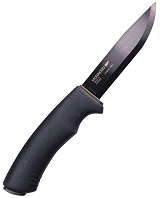
Ferrocerium
Rod Firesteel
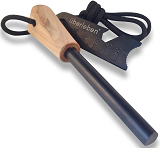
550 Paracord
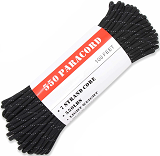
Stainless Steel Canteen
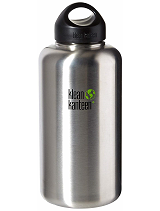
Waterproof
Tarp
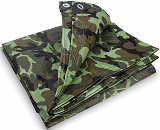
Multitool
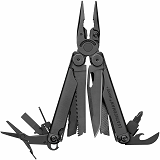
Stormproof Matches
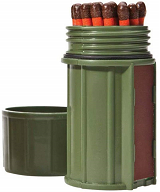
Folding
Hand Saw
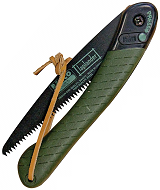
Stainless Steel
Pot
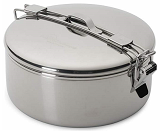
Waterproof
Rain Poncho
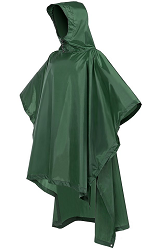
Water
Purification
Tablets
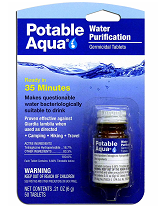
Kukri Machete
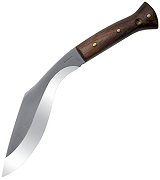
Magnifying
Lens Firestarter
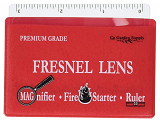
Duct Tape
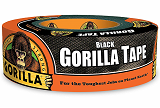
Compass
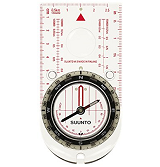
Water Filter
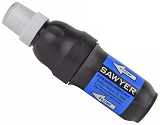
Magnesium
Stick Firestarter
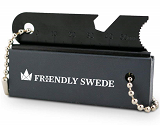
Blade
Sharpener
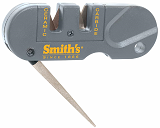
Firestarting
Tinder
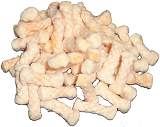
Fishing Kit
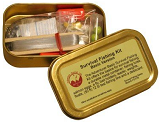

Survival Gear
Fixed Blade Bushcraft Knife

Ferrocerium
Rod Firesteel

550 Paracord

Stainless Steel Canteen

Waterproof
Tarp

Multitool

Stormproof Matches

Folding
Hand Saw

Stainless Steel
Pot

Waterproof
Rain Poncho

Water
Purification
Tablets

Kukri Machete

Magnifying
Lens Firestarter

Duct Tape

Compass

Water Filter

Magnesium
Stick Firestarter

Blade
Sharpener

Firestarting
Tinder

Fishing Kit


Comments (4)
Great post.
My recommended tang is skenetonized one. Several knives on the market use these cutouts in the skenetonized tang for dual purpose by wrapping the handle with emergency paracord.
Great site and lots of good information, but I have to disagree with the tang advice. The "partial tang" is strong enough for 90% of the swords ever forged, and properly affixed to a pommel is certainly strong enough for a knife used properly.
True, a good partial tang affixed properly will last most jobs and be worth using, but a full tang is the ideal and is always better, mainly because the full tang is itself the handle, and thus needs only superficial additions (like wood sides or wrapped clothe), and there is no chance of wobbling or loosening unless the metal itself breaks.
Sometimes there is a thin line between what is a full tang and a partial tang. If the partial tang is stout and meets the pommel then that could arguably be considered a full tang, or close. The problem is when partial tangs are much smaller than the blade and therefore can break easily.
This is an amazing knife. Excellent information, I have always been a fan of the non-folding knife because they are exceptional but a close second would have to be the bench made.Thanks for this guide! I know a lot about pocket knives but I’m still learning about on-folding knife.
Which One is Best Leather or Synthetic Sheath?